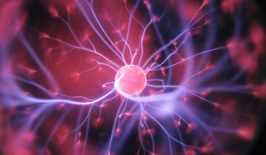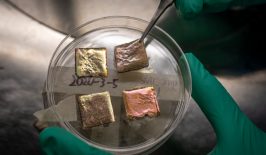Although there is variance between methods, home heating and cooling systems usually use more energy and cost more money to operate than any other appliance in a home. According to the US Department of Energy, heating makes up around 29 percent of a typical home’s utility bill, while in some cases this can increase up to 50 percent.
Furthermore, the energy-intense nature of heating has come under increased scrutiny due to vulnerabilities to the energy market created by the Russian invasion of Ukraine.
With winter fast approaching, is there perhaps a better, cheaper way to heat and cool our homes? Israeli startup ThermoTerra is developing an innovative system which can harness energy from the natural fluctuations in humidity through the day. The system can store it over long periods, before releasing it again with the aid of an artificial intelligence algorithm and Internet of Things devices.
Fundamentally, the system takes advantage of the disparity between dry and wet conditions in the air by storing the ‘wetness’ or ‘dryness’ within a hygroscopic material embedded in walls. Various materials are being trialled, including hempcrete, silica gel, or wood wool. When the surrounding air is drier or wetter than the hygroscopic material, the potential energy difference can be used to create a heating or cooling effect within the building.
The key to the system is humidity and the ThermoTerra system has been developed to take advantage of this natural and passive cycle. In the morning, when temperatures are lower, humidity is highest. Around noon, the opposite is true. By constantly passing ambient air through the system, these peaks and troughs can be smoothed out through the day.
This humidity balancing also results in the heating and cooling function of the system. During cooler, wetter periods, such as night and early morning, water is stored within the system. When warmer, drier air passes through it during hotter parts of the day, it evaporates the water, cooling the environment. In this sense, it functions similar to how sweat cools our bodies on a hot day. At night, cooler, wetter air enters the dry hygroscopic material, creating and releasing heat.
All of this heating and cooling is achieved with extremely low energy requirements, with the only energy input needed to blow the ambient air through the system.
Although the system can be left to function naturally throughout the day, ThermoTerra is also developing a management application, Active MemBrain, which can adjust air flow to store water or dry material for use at specific times. The software uses IoT sensors and simulation algorithms to accurately gauge airflow, humidity and temperature and make adjustments accordingly. ThermoTerra claim by artificially limiting airflow to specific times, temperature changes of 15 degrees or more can be achieved. The impact of the system will likely be greater in areas which experience the greatest difference in humidity throughout the day, such as nations like Israel. However, in consistently drier or wetter areas, its impact may not be so marked.
Since 2016, ThermoTerra is working with a number of companies and organisations to develop their patent and concept designs. As well as producing the so-called ‘SmartWall’, the startup has also been experimenting with cargo container models for temporary structures, such as army and refugee camps. In addition, they are developing methods of combining their humidity balancing technology with traditional burner stoves and single ventilation and air cooling systems.








